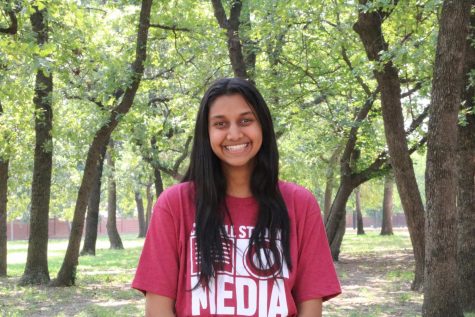Let people define themselves
Seeing positive racial, female, minority representation on TV improves self image
In today’s time, women and racial minorities are underrepresented on TV, while the LQBTQ+ community is overrepresented. Sidekick Staff Writer Anjali Krishna believes in order to change negative stereotypes about these groups, they must be accurately represented in TV.
January 24, 2020
When Washington fixer Olivia Pope was portrayed as the world’s most powerful person in Shonda Rhimes’ “Scandal”, millions of minds began to turn, shaping and adjusting their ideas of black women to include power.
I grew up watching “iCarly” and “Phineas and Ferb”, both shows with dominatingly white casts and one or two people of color, usually used as comedic fodder. In a white neighborhood in a then-white town, it was hard to believe that I, an Indian girl, could amount to more than being the punchline of a subtly racist joke.
Seeing a woman of color in a position of power inspired me; the characters I saw and loved were people I wanted to be like, but I was always set apart by the difference of my skin tone. When I saw a non-white woman being addressed as the most powerful person on the planet, I felt that I could be that as well.
The real excellence to “Scandal”, though, is the fact Pope is never defined by her skin color, but she never ignores it either. Pope is simply human, with real issues, real feelings and a real job. It is wonderful to see someone defined not only by their race but their talent. Even more wonderful is seeing someone acknowledge the role of race in her life but forbid it from stopping them.
When I look on TV and see characters who look like me, I find myself compelled to watch them. However, when directors and producers look on TV and see a character who looks like me, they see a risky venture. Shows with people of color, especially women of color, are believed to have niche audiences limited to that minority. Why are shows with people of color, women and members of the LQBTQ+ community considered to have niche audiences, but shows with only straight, white men are supposed to fulfill all of America?
For America’s 31% white males, the cause may seem frivolous, but for these groups, it is essential to change the way they are viewed. Only 1.4 of 10 lead actors are people of color, while around 3.9 of 10 Americans are people of color. Even in their roles, they play versions of negative racial stereotypes, and as majority groups continue to see them portrayed this way, it is easy for them to believe people of color are what they see.
Women make up 45% of characters on streaming programs, but 50% of the American population. Although the discrepancy may seem small, in a time of change for women’s rights, feminists hope to even out the gap to accurate numbers. Even when women are cast, the nature of the characters almost always support gender roles. Only 5% of women act as leaders and 53% of female characters play roles such as wife or mother, compared to 39% of males acting as fathers and husbands.
In a time of change for women’s equality, the nature and number of female TV characters is worrisome. While numbers have been increasing, the disparity is obvious. On popular ensemble shows such as “Criminal Minds” and “Brooklyn Nine-Nine”, casts are overwhelmingly male, which is especially prominent in these two shows due to the genre of the shows. Both of these are crime related shows, although “Brooklyn Nine-Nine“ has a much lighter air to it, often spoken of for its progressiveness. This genre has majority male viewers and mostly features women as dead bodies.
In contrast, the LQBTQ+ community is currently well represented in TV, perhaps even overly so. 4.5% of Americans have come out as LQBTQ+ and 10.2% of characters on television are part of the LQBTQ+ community. LQBTQ+ Americans have long endured hate and disgust, but in a growingly accepting 2020, things are changing. Several shows exploring sexual identity have emerged in the past years, such as “Glow” and “The L Word” and with each of these, the LQBTQ+ community is one step closer to being accepted.
In a growingly diverse America, an essential key to changing stereotypes and self image in is the accurate and positive portrayal of racial minorities, women, and members of the LQBTQ+ community in TV. Let people define themselves.
Follow Anjali (@anjalikrishna_) and @CHSCampusNews on Twitter.












Alishba Javaid • Jan 28, 2020 at 4:14 pm
Loved this story and really relate to this! I definitely agree that there should be more representation of racial minorities. I feel like people forget how big a difference it can really make.